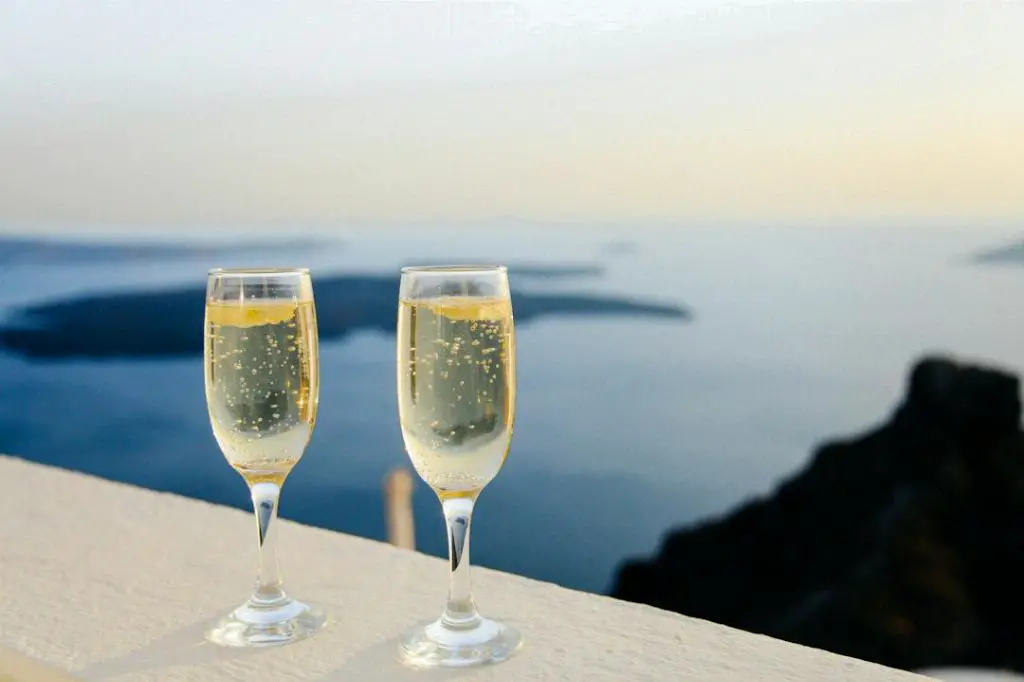When it comes to the color of champagne, it’s not as simple as categorizing it as either gold or silver. Champagne actually encompasses a diverse range of colors that can vary based on factors such as the grape variety, the aging process, and the style of production.
The Traditional Gold Hue
In its most traditional form, champagne exhibits a beautiful pale gold hue. This color is often associated with luxury and elegance, and it reflects the typical characteristics of a classic champagne. This pale gold shade is commonly seen in the majority of champagne varieties, giving them a recognizable and timeless appearance.
The Warm Ambiance of Amber
Some champagne vintages, particularly those that have undergone extended aging, can develop a warm and inviting amber hue. This amber color adds depth and complexity to the champagne, providing a visually appealing experience. This shade tends to be more prevalent in vintage champagnes and adds a touch of sophistication to the overall presentation.
Rosé Champagne: a Pinkish Glow
Another variation of champagne is the delightful rosé champagne. This type of champagne exhibits a pinkish glow, which is achieved through a special production process. Rosé champagnes can range from a pale salmon color to a vibrant pink shade, depending on the desired style and the amount of contact the grape skins have had with the juice.
Champagne’s Color Palette: A Wider Range
While gold, amber, and pink are the primary colors associated with champagne, it’s important to note that champagne can still surprise with its diverse range of colors. From pale straw-like tones to deeper yellow hues or even a hint of green, champagne can display an array of shades that captivate the eye.
What Influences Champagne’s Color?
Several factors contribute to the color variations in champagne. First and foremost is the grape variety used in the production process. Chardonnay grapes tend to produce champagnes with a lighter color profile, while Pinot Noir and Pinot Meunier grapes result in richer, fuller hues.
The aging process also plays a crucial role. Extended aging on the lees can enhance the golden and amber tones, while shorter aging times may yield champagnes with a lighter color. The dosage, a small amount of sugar added to the wine after disgorgement, can also influence the final color of champagne.
Appreciating Champagne’s Color
Champagne’s color is not merely an aesthetic characteristic, but it can also provide valuable clues about the wine’s age, flavor profile, and overall quality. Professional sommeliers and wine enthusiasts often examine the color, along with other factors, to gain insights into the champagne’s origin and style.
The Joy of Champagne Aesthetics
Regardless of whether champagne leans towards gold, amber, or pink, the visual appeal of champagne’s color is undeniably alluring. It sets the stage for a delightful sensory experience, heightening the anticipation of the flavors and aromas that await.

In Conclusion
So, is champagne a gold or silver drink? Neither. Champagne encompasses a beautiful spectrum of colors, ranging from pale gold to warm amber, and even radiant pink. These variations add to the intrigue and allure of champagne, making it a visually captivating beverage.
